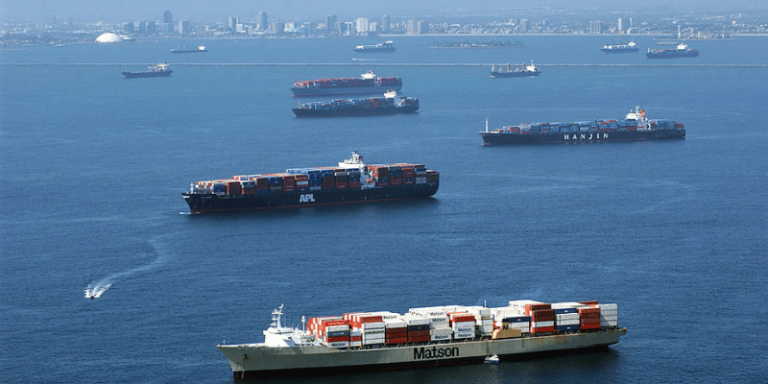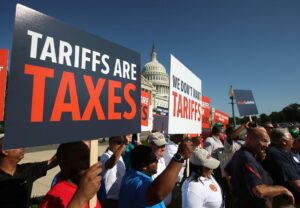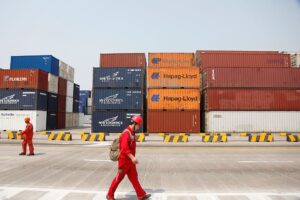What Is Free Trade? Pros and Cons of Tariffs
Should the government control trade, or stay out of it?
By: Andrew Moran | August 28, 2019 | 518 Words

(Photo by David McNew/Getty Images)
In economics, free trade happens when buyers and sellers from different countries trade with each other without either government getting involved. Otherwise known as “laissez-faire trade,” this allows for the importing (bringing in) and exporting (sending out) of goods and services.
Isolationists want less trade with other countries – or none at all. Protectionists want to help their own producers by restricting, controlling or otherwise influencing trade. Both involve the use of government power to influence or control trade with other nations, and that’s called interventionism. Both isolationists and protectionists use some of the same tools. Tariffs are taxes on imports designed to limit them and generate tax revenue. Quotas are limits on how much of something can be imported. A subsidy is money given by the government – which, of course, means tax dollars collected from the people – to help a producer.
Free trade is the opposite of both protectionism and isolationism, and it gets rid of the trade barriers erected by either other philosophy.
Pros
In the early years, the United States depended on tariffs to get money to run the government. Many of the taxes we have today didn’t exist then, and tariffs went as high as 95%. If a country wanted to get rid of a major tax or just needed the money, the government could put a new tax on imports.
The more common reason governments introduce tariffs is to protect a local industry from foreign competition. Should a company be protected from outside competition, it can grow its business at home and create more jobs – which can improve workers’ lives.

(Photo by Mark Wilson/Getty Images)
Cons
Higher prices are one of the biggest and most common consequences of tariffs. Because the consumers in the country that has the tariff are the ones paying the tax, the cost of goods and services goes up as tariffs go up. The price increase can affect low- and middle-income consumers’ purchasing power, which can then lead to a drop in sales.
If a company is protected from competition and benefits from protectionism, then it can raise prices. However, higher prices mean fewer people will want to buy, causing the company to lower prices.
The main problem that comes after tariffs is a trade dispute. As one nation applies tariffs on another, the other country retaliates by applying tariffs of their own. As the trade dispute gets worse, each nation adds more tariffs against the other. Moreover, a country could import less, hurting businesses that rely on sending products to other countries.

(Photo by In Pictures Ltd./Corbis via Getty Images)
Free Trade or Protectionism
Many people feel the government shouldn’t get involved in trade. They believe people from anywhere should be able to trade with other people from anywhere else without anyone else getting in the way. But as more jobs are sent to other countries, many people argue that free trade is hurting America.
Are tariffs and other protectionist policies good for the United States? You decide.
















